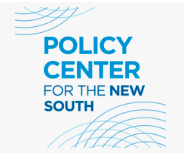Tempo de leitura: 1 minuto
Free trade zones have become major growth enablers in emerging economies, and we have seen these concepts powering the UAE economy to a great extent. More than 45 free zones and “economic zones” are contributing to the UAE economy and foreign trade in a much bigger way.
According to UAE Federal Customs Authority, trade through these free zones represented Dh592.4 billion — or 36 per cent — of the UAE’s Dh1.63 trillion foreign trade in 2018. This means more than a third of the UAE’s foreign trade is generated through these zones.
More than 5,400 special economic zones (SEZs) directly employ about 100 million people worldwide, while indirect employment generated by them has reached up to 200 million, according to the World Investment Report, 2019, published by the United Nations Council on Trade and Development.
Although global Foreign Direct Investment (FDI) flow declined 13 per cent to $1.3 trillion in 2018, investment into free zones have been rising steadily due to their proximity to logistics hubs and corridors as well as one-stop services to investors that makes doing business easier.
“SEZs are widely used in most developing and many developed economies. Within these geographically delimited areas governments facilitate industrial activity through fiscal and regulatory incentives and infrastructure support,” the World Investment Report said.
“There are nearly 5,400 zones across 147 economies today, up from about 4,000 five years ago, and more than 500 new SEZs are in the pipeline. The SEZ boom is part of a new wave of industrial policies and a response to increasing competition for internationally mobile investment.”
SEZs can help attract investment, create jobs and boost exports — both directly and indirectly where they succeed in building linkages with the broader economy. Zones can also support global value chain (GVC) participation, industrial upgrading and diversification. However, none of these benefits are automatic, it said.
A solid regulatory framework, strong institutions and good governance are critical success factors, with the inclusion of a comprehensive compliance regime. The legal infrastructure of SEZs should ensure consistent, transparent and predictable implementation of SEZ policies. The responsibilities of SEZ governing bodies should be clearly defined.






Os comentários foram encerrados, mas trackbacks e pingbacks estão abertos.